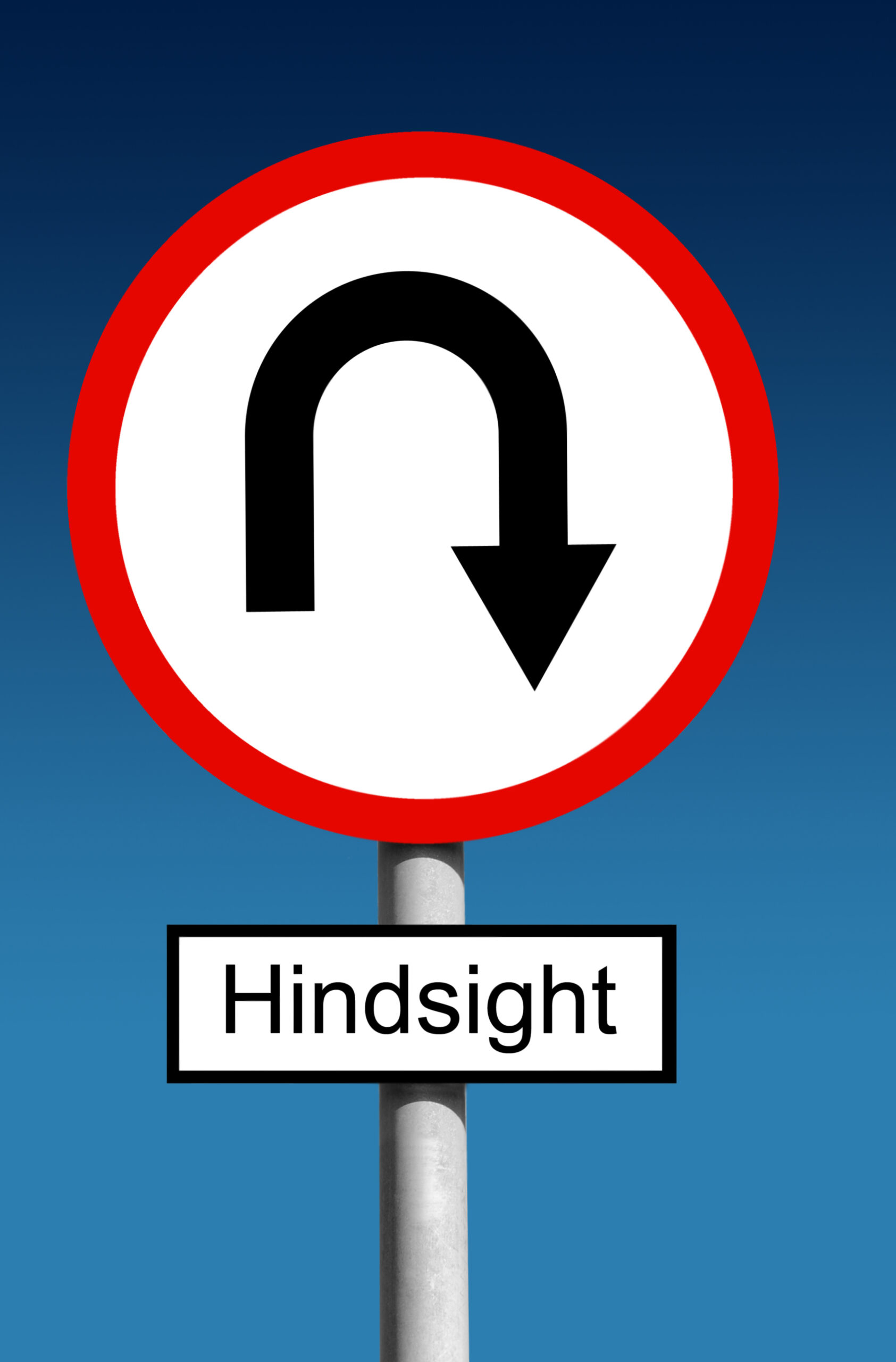“Language models have the potential to reduce the likelihood of appeals and legal challenges, streamline prosecution, and lead to more consistent and cost-effective patent examination.”
 The patent examination process is subject to the well-known issue of hindsight bias. Issues with hindsight bias come up when a patent examiner, without realizing it, uses their knowledge of the invention itself to reject a claim as being obvious. If left unchecked, these issues can lead to incorrect determinations of obviousness, which prolong prosecution, cause unnecessary ex parte appeals to be filed, and force unfair narrowing of independent claims. However, even when an examiner learns about an invention that seems straightforward, human emotions and subjectivity can make it difficult for that examiner to appreciate that the invention was not obvious based on prior art that existed before the invention. Instead, the examiner might be inclined to come up with a strained explanation of how the invention is obvious in view of whatever prior art is available. This is where Artificial Intelligence (AI) in patent law can play a vital role in addressing the issue of hindsight bias effectively. Unlike human examiners, AI models are not subject to emotions or biases, making them well-suited to deal with this issue.
The patent examination process is subject to the well-known issue of hindsight bias. Issues with hindsight bias come up when a patent examiner, without realizing it, uses their knowledge of the invention itself to reject a claim as being obvious. If left unchecked, these issues can lead to incorrect determinations of obviousness, which prolong prosecution, cause unnecessary ex parte appeals to be filed, and force unfair narrowing of independent claims. However, even when an examiner learns about an invention that seems straightforward, human emotions and subjectivity can make it difficult for that examiner to appreciate that the invention was not obvious based on prior art that existed before the invention. Instead, the examiner might be inclined to come up with a strained explanation of how the invention is obvious in view of whatever prior art is available. This is where Artificial Intelligence (AI) in patent law can play a vital role in addressing the issue of hindsight bias effectively. Unlike human examiners, AI models are not subject to emotions or biases, making them well-suited to deal with this issue.
AI Can Ensure Integrity and Accuracy
The use of large language models in patent law has the potential to significantly improve the examination process by reducing the likelihood of hindsight bias and providing an objective and consistent standard for determining obviousness. These models can receive as input an Office Action and the applied art, allowing them to analyze the documents and identify instances where an examiner used impermissible hindsight in their rationale for an obviousness rejection. By doing so, these models can help the examiner provide a more reliable and objective assessment of the patentability of an invention, thereby reducing the chances of incorrect determinations of obviousness. In essence, large language models offer a valuable tool for ensuring the integrity and accuracy of the patent examination process.
However, using language models for this type of hindsight analysis poses a challenge that the current language models are probably capable of handling already. Specifically, the language model needs to determine whether a person of ordinary skill in the art would have found it obvious to piece together only the prior art that was existing before the invention was first disclosed. To address this challenge, the language model will need to generate another model to represent the ordinarily skilled artisan and use that model to assess whether the invention would have been obvious at the time of filing.
The model to represent the ordinarily skilled artisan would involve collecting a dataset of prior art and knowledge of the level of skill in the art. The model would also need to understand the terminology and language used in the field of the invention. Once developed, the model can help identify when an examiner might unknowingly rely on hindsight bias in their obviousness determination.
On a practical level, examiners would run their draft office action through the model, consider feedback, and then address any necessary changes to strengthen their arguments. Similarly, tools can be developed for attorneys to use on the flip side to help identify hindsight bias. Attorneys can use the model to determine whether the examiner’s decision was biased and use that knowledge to formulate appropriate arguments for the examiner.
One issue that can arise in hindsight analysis is the temptation to piece together prior art references in a way that may not have been obvious to a person of ordinary skill in the art. This practice, known as “cherry-picking,” can lead to an incorrect determination of obviousness. For example, an examiner might take one element from one reference and another element from another reference to argue that the invention was obvious. However, this approach may not have been obvious to a person of ordinary skill in the art at the time of the invention. Language models can help address this issue by analyzing the Office Action and the applied art to identify instances of cherry-picking and other improper uses of prior art. By doing so, these models can provide a more accurate and objective assessment of the patentability of an invention, which can help prevent unnecessary appeals and legal challenges. By using objective criteria and avoiding subjective biases, language models offer a promising solution for ensuring the integrity of the patent examination process and reducing the impact of hindsight bias.
The Pros Outweigh the Cons
To maximize the potential of this technology, it is essential for the USPTO to prioritize the development and testing of specialized models for hindsight analysis. Although the development and implementation of these language models may require initial investment and training, their potential benefits in the long run are significant. Furthermore, exploring how these models can be integrated into the patent examination process is crucial. By leveraging the power of these models to detect when an examiner has used hindsight in an Office Action, examiners can make more informed and objective assessments of the patentability of an invention. Ultimately, this leads to a more efficient, consistent, and cost-effective patent examination process.
In conclusion, language models have the potential to reduce the likelihood of appeals and legal challenges, streamline prosecution, and lead to more consistent and cost-effective patent examination. As such, it is worth exploring how language models can be integrated into the patent examination process to help address the issue of hindsight bias. With continued effort and investment, language models can help revolutionize the patent examination process, making it more efficient, consistent, and objective.
Image Source: Deposit Photos
Image ID: 18909067
Author: woodsy007

![[IPWatchdog Logo]](https://ipwatchdog.com/wp-content/themes/IPWatchdog%20-%202023/assets/images/temp/logo-small@2x.png)

![[Advertisement]](https://ipwatchdog.com/wp-content/uploads/2024/04/Artificial-Intelligence-2024-REPLAY-sidebar-700x500-corrected.jpg)
![[Advertisement]](https://ipwatchdog.com/wp-content/uploads/2024/04/UnitedLex-May-2-2024-sidebar-700x500-1.jpg)
![[Advertisement]](https://ipwatchdog.com/wp-content/uploads/2024/04/Patent-Litigation-Masters-2024-sidebar-700x500-1.jpg)

![[Advertisement]](https://ipwatchdog.com/wp-content/uploads/2021/12/WEBINAR-336-x-280-px.png)
![[Advertisement]](https://ipwatchdog.com/wp-content/uploads/2021/12/2021-Patent-Practice-on-Demand-recorded-Feb-2021-336-x-280.jpg)
![[Advertisement]](https://ipwatchdog.com/wp-content/uploads/2021/12/Ad-4-The-Invent-Patent-System™.png)






Join the Discussion
7 comments so far.
Rajesh
June 8, 2023 06:04 amVery thoughtful..looks like a good possibility for improving examination process.
Breeze
May 31, 2023 09:43 amInteresting idea. But creating a model that doesn’t have any bias, either in favor or obviousness or non-obviousness, will be tricky.
Anon
May 16, 2023 03:36 pmMr. Abeyta,
How do you propose to get around a major block that you omitted in your article – that of confidentiality and non-public disclosure prior to submitting an application?
Further, even after submission (and in those instances in which a non-publication request may not be applicable), there are ethical constraints on what an attorney may or may not share with public-facing AI tools.
Will the AI tools be separately developed and/or used with Non-Disclosure agreements? How would any ‘on-the-go’ training be constrained? perhaps forsaken?
These may sound trivial, but rest assured, in our industry, they are not.
David Lewis
May 16, 2023 12:02 pmGood article. Unfortunately, I think it is inevitable that we will see AI-assisted examination, preparation of patent applications, preparation of responses to OAs, litigation, and court decisions. While there may be ways to apply AI in all these situations to improve patent quality and enforceability, there are also many ways of applying AI that can degrade the process. I think that some more likely results of AI-assisted examinations are more rejections based on logically uncombinable combinations of references and references from non-analogous arts. When the Examiner makes a strained rejection, it is because they do not believe the claim is allowable, and have not been able to find a good reference-combination or find the rationale to motivate the combination. If the Examiner has an AI tool available, they will use it to help in writing such rejections. The reality is the Examiner relies on intuition, and will all the tools available to back that intuition, but intuition, is often essentially hindsight.
Also, it is the culture (or unwritten policy) of the PTO to first write a rejection, even if the rejection is highly flawed, and let then the attorney explain why the rejection is no good. The purpose of this “culture” is to establish a written record of why the patent is allowable. AI likely would be used for writing these initial rejections also.
However, regarding intuition, the good news, for now, is now the Examiner also relies on intuition to allow some claims. When that intuition is removed by AI, a lot of claims that are currently allowed will likely be rejected by AI over horrible reference combinations that only an AI would be put together (despite being trained as to the level of ordinary skill in the art).
SJF
May 16, 2023 09:20 amInteresting article. I understand that programs like ChatGPT want “to please” the user. As a consequence, a program developed by the USPTO might evolve to favor the “Examiner’s position” of rejecting a claim, whereas the same program in the hands of an agent/attorney might evolve to favor the agent/attorney’s position. Do you have any concerns in this regard?
Julie Burke
May 15, 2023 08:21 pmThank you, Derek, for this interesting perspective on a complex, important and timely topic.
Pro Say
May 15, 2023 04:02 pmHere an AI, there an AI, everywhere an AI:
The inventor pushes some AI buttons . . . inventor’s prep + pros law firm pushes some AI buttons . . . examiner pushes some AI buttons . . . p + p law firm pushes some more AI buttons . . . some years after the patent issues, litigation law firm pushes some AI buttons . . . infringer pushes some AI buttons . . . Dist. Court pushes some AI buttons . . . PTAB Death Squad pushes some AI buttons . . .
Yea; right.